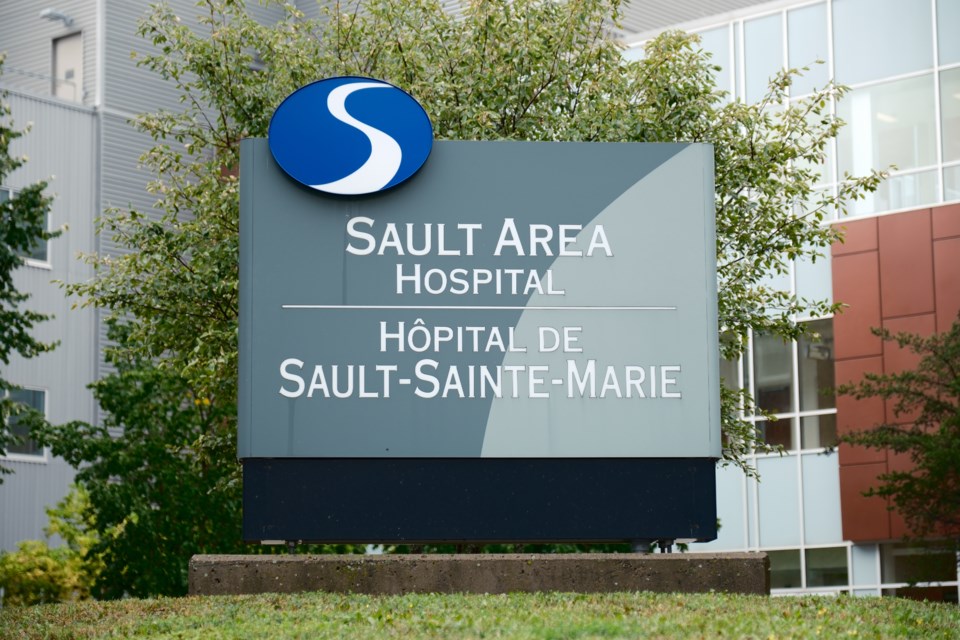Even though the emergency room has become busier at Sault Area Hospital, workplace violence incidents are on the decline.
For 2024/25 year, the hospital averaged 6.2 workplace violence incidents per month, well below its set target of 13.4 incidents per month, according to a hospital goals report presented to the SAH board of directors on Monday night.
“There's been a lot of focused effort on this for the last three years. This is not a new measure for us,” said Shauna Hynna, the hospital’s vice president of people, planning, and partnerships.
“We do have a committee that focuses on workplace violence, and they . . . help support very specific departments that need that.”
Meanwhile, hospital occupancy rose to an average of 281.3 beds per day, compared to 263 beds per day through 2023/24 – with the number of unattached patients, or those without a family doctor, climbing since COVID-19.
“The types of patients we're seeing are much different, of course, than what we were seeing before COVID, perhaps 10 years ago,” said Stephen Smith, vice president of medical affairs.
“We are seeing a larger number of unattached patients, and their needs expand beyond what we can provide quickly from the emergency room, so we often try to work with those patients to meet their needs as best we can in the short period, but it takes longer to care for that patient.”
According to the report, the number of emergency room visits have remained stable, while actual admissions to hospital have climbed.
“Admissions were higher than expected, likely because patients' chronic conditions had worsened due to gaps in ongoing care. This creates a sicker population,” the report stated.
“Our population continues to age, and challenges in accessing primary care remain unresolved, contributing to higher acuity among admitted patients.”
A busier emergency room does not necessarily mean more workplace violence, however, with hospital staff clarifying that its stats reflect workplace violence across the entire hospital.
"Encouragingly, the actual increase in incidents has been smaller than trends would have suggested, pointing to a level of stability even as system pressures continue," said Brandy Sharp Young, the hospital's director of communications and public affairs.
The main reasons for decreasing workplace violence are updates to the hospital's workplace violence education modules, and renewing its workplace violence committee with a focus on reviewing incidents and prevention programs.
"At the same time, we continue to encourage staff to report all incidents, especially verbal violence, which we believe is still under-reported," Sharp Young said.
"Accurate reporting is essential to understanding the full scope of the issue and guiding ongoing improvements."
The hospital also met its goals for the year in ambulance offload times, with the 90th percentile offload time – meaning 9 of 10 patients will wait a certain amount of time or less – improved to 60.8 minutes compared to 75.5 minutes in 2023/24, well below the target of 70 minutes.
Continuing use of a dedicated ambulance offload nurse has helped bring down the offload time, the report stated.
However, wait times for initial physician assessments at the emergency department fell below the mark, with 90th percentile patients waiting 5.5 hours against the target of 5 hours – though this year’s figure was still an improvement over the 5.7-hour wait last year.
“We did not meet the target. However, we do feel positive that we're moving this in the right direction,” Hynna said.
Although additional funding has been added for physician hours in the emergency department, Hynna also mentioned that “you can have funding, but it doesn’t mean we actually have the people there to deliver the services.”
Similarly, the hospital’s discharge ratio for alternative level of care patients fell shy of its target, with a 0.99 ratio against a target of 1.01.
This means that patients who do not require the intensity of care provided by hospital admission – such as someone awaiting long term care – were being admitted at a slightly higher rate than they were being discharged.
Aside from performance in the emergency department and discharging patients, hospital staff were fairly happy through 2024/2025 – with 71.4 per cent indicating a rate of positive experience at the hospital, above the 65.4 per cent target.
Physicians, however, fell below that target, with a 64 per cent rate of positive experience, although the board mentioned that numerous factors – from parking difficulties in the winter, to whether or not there’s an available bed for a patient – can all factor into a doctor’s experience beyond ensuring they are treated well on the job.
